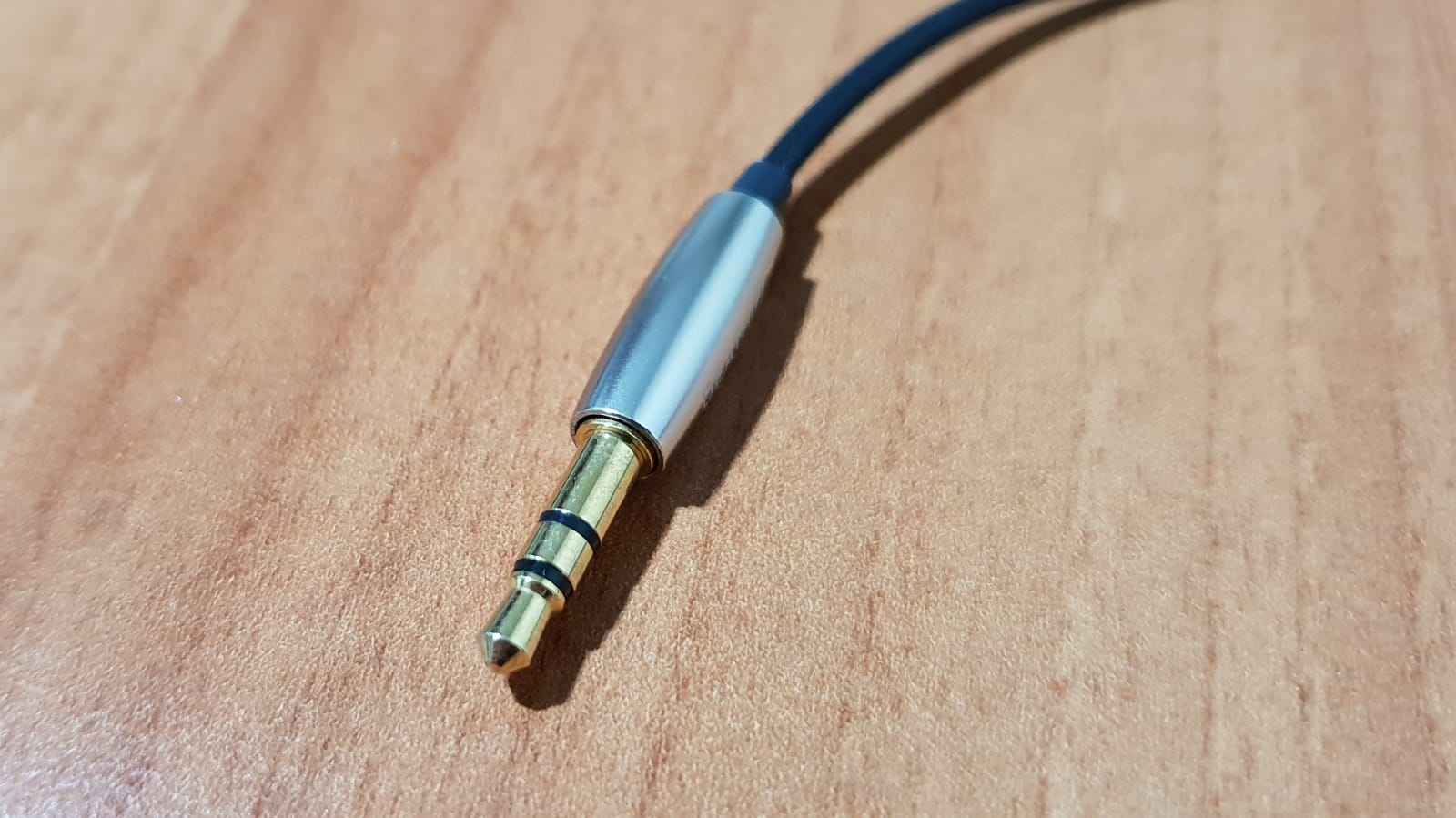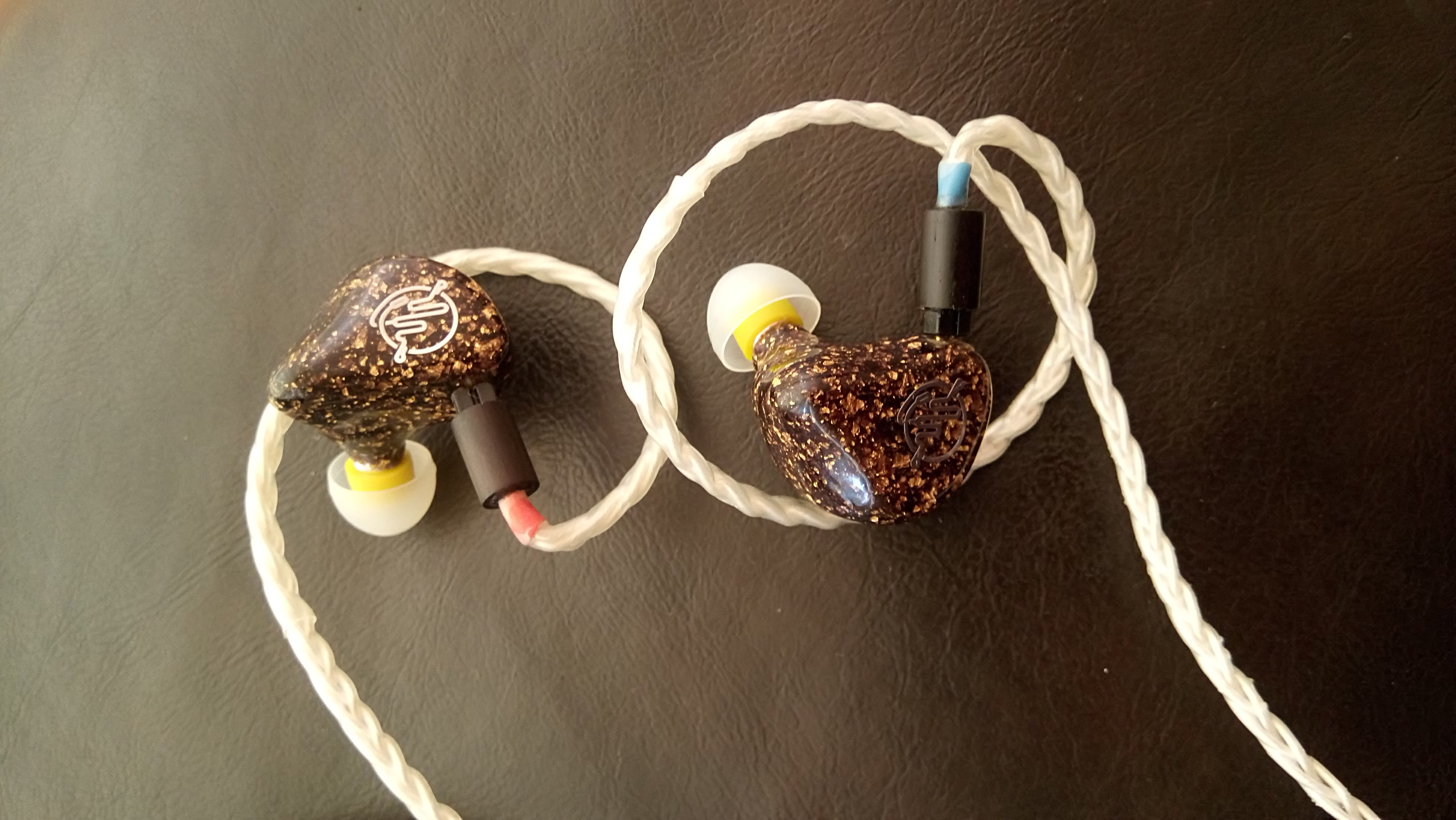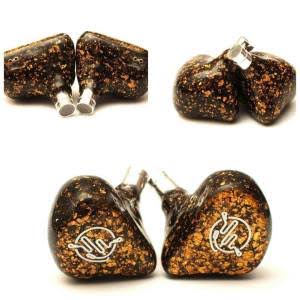Deat Hifi Small Review
Deat Hifi is a China based company that is producing earphones. The Deat Hifi Small is the first product of this brand.
I would like to thank Deat Hifi and Penon Audio for sending me this earphone sample. You can find the Deat Hifi Small on Penon Audio for 29.00 US$.
Material Quality:
Deat Hifi Small is showing a minimalistic design concept. The housing is very Small same as the name of the earphone itself and the build quality is absolutely fantastic for this price.



The chassis of the Deat Hifi Small is of aluminum with the so called “Aurora Red” painting. The nozzle on the front is made of black plastic and the cable is fixed to the chassis.



Specifications:
Brand: DEAT
Model: SMALL
Driver: 5.8mm custom micro-dynamic driver
Impedance:16 ohm
Cable length: 1.2 M
Frequency response range: 15~28000Hzz
Sensitivity: 112dB
Wearing weight: 1.27g
Earphone weight: 13g
Material: aviation aluminum
Process: CNC carving processing + anodizing process
Package:
-DEAT SMALL Earphone
-Eartips
-Cloth Pouch
-Clip
-Print Material

Sound Quality:
Deat Hifi Small is a very small earphone with a 5.8mm micro dynamic driver that has a v shaped sound signature with a strong bass that will surprise most users. The presentation of the mids is musical and the highs are fatigue-free.
Lows:
The Deat Hifi Small is capable to produce warm, deep and strong bass that is balanced in quantity and intensity. The bass quantity is not on the level of bassheads but will satisfy the most users for sure. In short, the Deat Hifi Small has a bass performance that has enough power and extension with the exception of a slightly lack of quantity in the sub-bass region.
The bass of the Deat Small is not very loose/splay and can be classified as bass type with tight impact.
I have found the speed, emphasis and tightness of the Deat Hifi Small in Megadeth and Opeth's drum performances successful.
The sub-bass performance in tracks like Pop / EDM / Trance music is relative sufficient but is missing a little bit of extension and depth.
There are no negative situations like a mid-bass hump and the mid-bass is also not bleeding in to the mids that could overshadow the presentation in this area. In short, the Deat Hifi Small will satisfy its users with its fun, powerful and warm bass presentation.
Mids:
The male vocal performance of the Deat Small is deep and powerful, while the female vocals are warm and somewhat veiled. Both male and female vocals are not too bright, and I think that male vocals are more successful than female vocals because of the lack of clarity / transparency in female voices.
The Deat Hifi Small is more successful in music styles like Rock, Acoustic, Metal or Pop than in Jazz and Classical, where are too many instruments. The instrument separation of this in-ear is quite sufficient especially for acoustic songs where you can find a small number of instruments. Especially people who like warm, fat and fatigue-free mids will love the Deat Hifi Small.
Treble:
Deat Small’s treble presentation is not laid back or too upfront, it extends very well without to shine or to fatigue.
The treble extension and intensity of with instruments like cymbals and bells is relative successful. The upper mids / highs do not have the kind of presentation that would bother your ears after prolonged listening.
I like Deat Small’s instrument performance a lot particularly with woodwind instruments and violins that don’t showing any sharp or harsh tonality. Vivaldi’s violins that are playing from a high pitch are also quite controlled with the Deat Hifi Small.
The Soundstage:
Deat Small does not have a very large scene and is showing an average expansion that is pretty normal for earphones for this size and price range. The depth is parallel to the width and is big enough for songs with lower instrument density.
Comparison with Hypersense Hex02:
The Hypersense Hex02 and Deat Hifi Small are warm sounding IEM with V shaped character. The Hex02 sub-bass is deeper and has more quantity. The mid-bass of Hex02 is punchier but the Deat Hifi Small is faster and a bit more controlled.
The mids of both IEMs are laid back. Female voices are more successful with the Hex02, but the Deat Hifi Small have better depth for male vocal’s.The Deat Hifi Small is sounding more spacious and airy than Hypersense Hex02 that has otherwise detail and definition for instrument’s. The upper-mids of the Hex02 is a bit more detailed, while Deat Hifi Small is more.
The highs of the Deat Hifi Small have better extension, are brighter and more vivid than Hypersense Hex02 while both are fairly controlled
The stage of the Deat Hifi Small is wider than those of the Hypersense Hex02, while the Hex02 has a bit more depth.
Comparison with Alpha & Delta D3:
The Alpha&Delta D3 and the Deat Hifi Small are relative warm sounding IEM’s with a V shaped sound character. Please note that the AD D3 sounds warmer than Deat Hifi Small.
The AD D3 has more sub-bass quantity and depth than those of the Small. And is aslo punchier in the mid-bass area. But the Deat Hifi Small has the faster and tighter bass response.
The mids of both AD D3 and Deat Hifi Small are laidback, but the mids of the AD D3 are warmer, thicker and veiled than the Deat Hifi Small that is more transparent and musical.
Female vocals are more successful with the Small because of the upper mids that show more sparkle. Male vocals are a bit more emotional with the AD3.
The Deat Hifi Small is more detailed and clearer in terms of instrument presentation.
The highs of the Deat Hifi Small are brighter and more vivid than those of the AD D3.
The highs of the Small have more quantity and extension.
The soundstage of the Deat Hifi Small is wider than compared to those of the AD D3, which shows slightly better depth.
Pros / Cons:
• Clean Sound
• Good Bass
• Build Quality
• Small Form Factor
• Comfortable
• Some Driver Flex
• Soundstage Depth
• Cable
Deat Hifi is a China based company that is producing earphones. The Deat Hifi Small is the first product of this brand.
I would like to thank Deat Hifi and Penon Audio for sending me this earphone sample. You can find the Deat Hifi Small on Penon Audio for 29.00 US$.
Material Quality:
Deat Hifi Small is showing a minimalistic design concept. The housing is very Small same as the name of the earphone itself and the build quality is absolutely fantastic for this price.



The chassis of the Deat Hifi Small is of aluminum with the so called “Aurora Red” painting. The nozzle on the front is made of black plastic and the cable is fixed to the chassis.



Specifications:
Brand: DEAT
Model: SMALL
Driver: 5.8mm custom micro-dynamic driver
Impedance:16 ohm
Cable length: 1.2 M
Frequency response range: 15~28000Hzz
Sensitivity: 112dB
Wearing weight: 1.27g
Earphone weight: 13g
Material: aviation aluminum
Process: CNC carving processing + anodizing process
Package:
-DEAT SMALL Earphone
-Eartips
-Cloth Pouch
-Clip
-Print Material

Sound Quality:
Deat Hifi Small is a very small earphone with a 5.8mm micro dynamic driver that has a v shaped sound signature with a strong bass that will surprise most users. The presentation of the mids is musical and the highs are fatigue-free.
Lows:
The Deat Hifi Small is capable to produce warm, deep and strong bass that is balanced in quantity and intensity. The bass quantity is not on the level of bassheads but will satisfy the most users for sure. In short, the Deat Hifi Small has a bass performance that has enough power and extension with the exception of a slightly lack of quantity in the sub-bass region.
The bass of the Deat Small is not very loose/splay and can be classified as bass type with tight impact.
I have found the speed, emphasis and tightness of the Deat Hifi Small in Megadeth and Opeth's drum performances successful.
The sub-bass performance in tracks like Pop / EDM / Trance music is relative sufficient but is missing a little bit of extension and depth.
There are no negative situations like a mid-bass hump and the mid-bass is also not bleeding in to the mids that could overshadow the presentation in this area. In short, the Deat Hifi Small will satisfy its users with its fun, powerful and warm bass presentation.
Mids:
The male vocal performance of the Deat Small is deep and powerful, while the female vocals are warm and somewhat veiled. Both male and female vocals are not too bright, and I think that male vocals are more successful than female vocals because of the lack of clarity / transparency in female voices.
The Deat Hifi Small is more successful in music styles like Rock, Acoustic, Metal or Pop than in Jazz and Classical, where are too many instruments. The instrument separation of this in-ear is quite sufficient especially for acoustic songs where you can find a small number of instruments. Especially people who like warm, fat and fatigue-free mids will love the Deat Hifi Small.
Treble:
Deat Small’s treble presentation is not laid back or too upfront, it extends very well without to shine or to fatigue.
The treble extension and intensity of with instruments like cymbals and bells is relative successful. The upper mids / highs do not have the kind of presentation that would bother your ears after prolonged listening.
I like Deat Small’s instrument performance a lot particularly with woodwind instruments and violins that don’t showing any sharp or harsh tonality. Vivaldi’s violins that are playing from a high pitch are also quite controlled with the Deat Hifi Small.
The Soundstage:
Deat Small does not have a very large scene and is showing an average expansion that is pretty normal for earphones for this size and price range. The depth is parallel to the width and is big enough for songs with lower instrument density.
Comparison with Hypersense Hex02:
The Hypersense Hex02 and Deat Hifi Small are warm sounding IEM with V shaped character. The Hex02 sub-bass is deeper and has more quantity. The mid-bass of Hex02 is punchier but the Deat Hifi Small is faster and a bit more controlled.
The mids of both IEMs are laid back. Female voices are more successful with the Hex02, but the Deat Hifi Small have better depth for male vocal’s.The Deat Hifi Small is sounding more spacious and airy than Hypersense Hex02 that has otherwise detail and definition for instrument’s. The upper-mids of the Hex02 is a bit more detailed, while Deat Hifi Small is more.
The highs of the Deat Hifi Small have better extension, are brighter and more vivid than Hypersense Hex02 while both are fairly controlled
The stage of the Deat Hifi Small is wider than those of the Hypersense Hex02, while the Hex02 has a bit more depth.
Comparison with Alpha & Delta D3:
The Alpha&Delta D3 and the Deat Hifi Small are relative warm sounding IEM’s with a V shaped sound character. Please note that the AD D3 sounds warmer than Deat Hifi Small.
The AD D3 has more sub-bass quantity and depth than those of the Small. And is aslo punchier in the mid-bass area. But the Deat Hifi Small has the faster and tighter bass response.
The mids of both AD D3 and Deat Hifi Small are laidback, but the mids of the AD D3 are warmer, thicker and veiled than the Deat Hifi Small that is more transparent and musical.
Female vocals are more successful with the Small because of the upper mids that show more sparkle. Male vocals are a bit more emotional with the AD3.
The Deat Hifi Small is more detailed and clearer in terms of instrument presentation.
The highs of the Deat Hifi Small are brighter and more vivid than those of the AD D3.
The highs of the Small have more quantity and extension.
The soundstage of the Deat Hifi Small is wider than compared to those of the AD D3, which shows slightly better depth.
Pros / Cons:
• Clean Sound
• Good Bass
• Build Quality
• Small Form Factor
• Comfortable
• Some Driver Flex
• Soundstage Depth
• Cable







